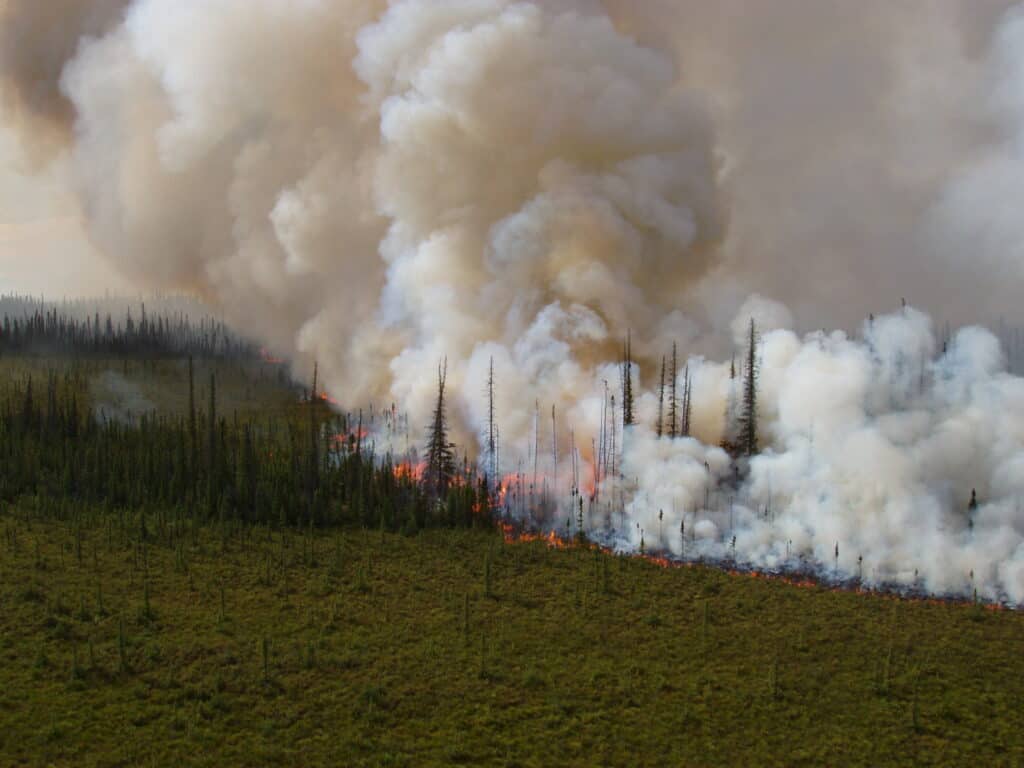
This article was originally published in the Bozeman Daily Chronicle.
As wildfire smoke rolls through the east creating an eerie, apocalyptic haze, east coasters are currently getting a small taste of the reality Westerners deal with every fire season. Summer unfortunately means wildfires, as Montanans are well aware. In the upcoming months, smoke will continue to fill the air and flames will destroy homes, watersheds, and wildlife habitat. The scarred hillsides found around the state serve as a reminder of what we stand to lose.
Litigation and red tape make it increasingly difficult for the U.S. Forest Service to tackle the wildfire crisis. Earlier this spring, a partial legislative band-aid that shielded the agency from expensive and time-consuming litigation expired. At a time when nearly nine million acres across Montana are at high to very high risk of wildfire, litigation acts as an obstacle to active forest management. Without a permanent solution, our forests—along with the humans and wildlife who depend on them—will be the victims.
When the Forest Service sets out to conduct a forest restoration project, the agency is careful to consider how these projects will impact endangered and threatened species and updates that analysis when new information arises. In 2015, however, the litigious Cottonwood Environmental Law Center contended that this process was insufficient and argued that the Endangered Species Act required the Forest Service to halt forest projects while the agency reanalyzes its general forest plan. Unfortunately, the Ninth Circuit—which has jurisdiction over nine states in the West, including Montana—adopted the theory.
The Obama administration warned that this Cottonwood decision could “cripple” the Forest Service’s ability to restore forests and distract the Fish and Wildlife Service from recovering species. Congress heeded this warning by enacting legislation known as the Cottonwood temporary fix that, for five years, shielded the Forest Service from similar litigation.
When the temporary fix expired in March, it produced real delays, pausing plans that might benefit endangered species. The Forest Service now estimates that restoration work in up to 87 forests will be halted for the agency to reanalyze the general forest plan, potentially delaying projects by up to ten years and costing the agency millions of dollars—time and money that the Forest Service does not have. It’s worth noting that these planning documents remain in place for decades and have no on-the-ground impacts. Senator Angus King (I-Maine) has compared this to redoing a city’s entire zoning plan over a neighborhood-level problem, regardless of whether or not the problem had been dealt with at the neighborhood level. This is one of the reasons why a permanent fix is supported by a wide range of conservation groups.
Actively restoring our forests can reduce the risk of catastrophic wildfires and promote healthy forest ecosystems. Restoring forests by removing overgrowth, deadfall, and other fuels through mechanical thinning and prescribed burns are proven approaches to reduce wildfire risk. When the Bootleg Fire in Oregon passed from the Fremont National Forest to the conservancy’s Sycan Marsh Preserve, for example, the nature of the wildfire changed dramatically. In an area that the conservancy had thinned and then managed with prescribed burns, the flames shrank to a mere four feet, dropping from the forest canopy to the ground, where they were easier to control.
Knowing how effective these tools can be, the Forest Service created a 10-year strategy to implement strategic restoration projects on 50 million acres (over and above its normal workload) of federal, state, and private land where fire threats to communities are greatest. Yet at a time when we need to be scaling up forest restoration, applying these tools on the ground will become even more tangled in paperwork and legal challenges now that the temporary Cottonwood fix has expired. When restoration is delayed, wildlife habitat is more likely to go up in flames. Removing barriers to forest restoration will help eliminate the risk of destruction and benefit the endangered species that live in those ecosystems.
As Montanans, we value the state’s immense natural beauty, diverse wildlife, and outdoor opportunities. This fire season, as we fight to protect our natural resources, let’s not forget our first line of defense. It’s time to fix Cottonwood and increase active forest restoration to build a healthier and more resilient Montana.




